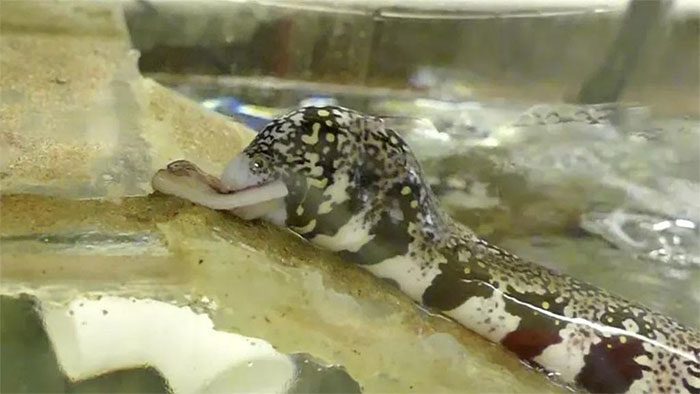The Moray eel has a second jaw. These secondary jaws can snap forward instantly to grasp prey and pull it into its mouth.
Fish typically require water movement to transport food from their mouths to their stomachs. However, the moray eel (Echidna nebulosa) can ambush crabs on land by slithering from the sea to catch prey during low tide. Researchers have recently discovered that the snap of the moray eel’s secondary jaw is strong enough to help it swallow prey without retreating back into the ocean.

Moray eel slithering onto land to swallow prey.
Rita Mehta, an associate professor in the Department of Ecology and Evolutionary Biology at the University of California, stated that unlike most jaws in the pharynx of fish species, the jaw of the moray eel is “very mobile” and can maneuver through its throat and into its mouth.
Mehta described how the moray eel takes advantage of this feature when foraging in water, with its pharyngeal jaw functioning as “these amazing clamps that capture prey”. In a new study published on June 7 in the Journal of Experimental Biology, Mehta and co-author Kyle Donohoe, a research assistant at the UCSC Cognitive and Sensory Systems Laboratory, filmed moray eels as they consumed food while out of water.
Mehta noted: “Based on what we know about the mechanics of the pharyngeal jaw, it is evident that if the moray eel can catch prey in the intertidal zone or on land, it can also swallow prey on land without relying on water.”
The long muscle pulls the moray eel’s pharyngeal jaw forward to grasp prey and then slide it down its throat.





















































